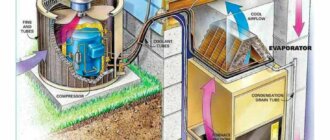How to Avoid Jaw-Dropping Freon Prices
As temperatures rise, so do the costs of keeping cool! If you’ve been hit with jaw-dropping Freon prices, you’re not alone. The refrigerant used in air conditioning units is expensive and in high demand. But don’t sweat it – there are ways to avoid breaking the bank when it comes to keeping your space comfortably chilled. In this blog post, we’ll explore everything from understanding Freon and its pricing to alternative options for more cost-effective and environmentally friendly cooling solutions. Follow these tips to stay cool without draining your wallet!
Understanding Freon and Its Pricing
Freon is a type of refrigerant that has been widely used in air conditioning and other cooling systems for decades. It was created by the DuPont company in the 1930s and became popular due to its efficiency, safety, and non-toxic properties.
Freon works by absorbing heat from the surrounding environment, which causes it to evaporate into a gas. This gas then travels through pipes to an area where it can be compressed back into a liquid form, releasing the absorbed heat in the process. This cycle repeats continuously to keep your home or office cool.
However, Freon is also known for being expensive compared to other refrigerants. The high cost of Freon can be attributed to several factors such as limited production capacity due to environmental regulations and increasing demand from developing countries.
Moreover, Freon’s production requires complex chemical processes which result in higher costs than some alternative refrigerants that are easier and cheaper to produce.
In recent years, there has been growing concern about the environmental impact of Freon. Its widespread use has contributed significantly to ozone depletion, leading governments around the world to impose strict regulations on its usage, resulting in increased prices too.
Understanding why Freon is so expensive involves looking at both supply chain issues like production costs but also regulatory issues related directly to climate change concerns, which have led towards phasing out this product completely while promoting alternatives that are more environmentally friendly and cost-effective.
Detailed explanation about Freon, its uses, and why it is expensive
Freon, also known as chlorofluorocarbon (CFC), is a refrigerant commonly used in air conditioning systems. It is colorless and odorless and has been popularly used since the 1930s due to its excellent cooling properties. However, Freon has become increasingly expensive over the years.
One of the reasons why Freon prices are high is because it is no longer produced in many countries due to environmental concerns. CFCs have been found to contribute significantly to ozone depletion, which leads to a thinning of Earth’s protective ozone layer. The decline in production means that there are fewer suppliers, leading to higher prices.
Moreover, another factor contributing to high Freon prices is the cost of transportation and storage. As a hazardous material with strict regulations on handling and disposal, Freon requires special equipment for shipment and storage, which drives up costs.
Despite its drawbacks, Freon remains an important component for air conditioning systems worldwide. Its unique cooling properties make it ideal for commercial industries such as supermarkets or data centers where large-scale cooling requirements exist.
While Freon may be expensive due to environmental concerns and logistics challenges associated with transporting it safely, there are still valid uses for this refrigerant in various commercial settings requiring efficient cooling solutions.
Explanation of factors contributing to high Freon prices
Freon is a type of refrigerant used in air conditioning systems that has been linked to environmental damage. With greater awareness of the harm it causes, governments have tightened regulations on its use and production, leading to higher prices. However, this is not the only factor contributing to high Freon prices.
The cost of manufacturing Freon also plays a part in its expensive price tag. The process involves several steps, including chemical reactions and distillation processes that require significant amounts of energy and specialized equipment.
Furthermore, limited supply adds to the cost as there are fewer manufacturers producing Freon due to government regulations. This means that competition for available stock can drive up prices even further.
Another factor impacting the price is transportation costs incurred during importation or inter-state shipping from one facility to another within countries like America where production still exists but has reduced significantly over recent years.
These factors combine to create an expensive commodity with limited availability; however, increasing awareness about alternative refrigerants can make consumers consider it before purchasing new ACs or servicing existing ones with Freon gas.
Impact of High Freon Prices
The rising cost of Freon has a significant impact on both businesses and consumers alike. For business owners, the increased prices can lead to decreased profit margins or even financial strain. Consumers also face higher costs for air conditioning repair and maintenance services, which can be especially burdensome during hot summer months.
One of the biggest concerns with high Freon prices is the environmental impact. As refrigerant prices increase, many consumers may delay necessary repairs or opt to purchase cheaper alternatives that are less environmentally friendly. This can lead to greater emissions of greenhouse gases and ozone-depleting substances.
Moreover, high Freon prices can also discourage individuals from investing in energy-efficient technologies such as newer air conditioning systems. While these may have higher upfront costs than traditional models using Freon, they offer long-term savings through lower utility bills and reduced need for expensive repairs.
It is crucial to consider alternative refrigerants as well as the efficient use of current AC systems to mitigate the financial burden and environmental impact caused by high Freon prices.
Examination of how rising Freon prices affect consumers and businesses
The increase in Freon prices has a significant impact on both consumers and businesses. For consumers, it means higher costs for air conditioning repairs or replacements. Many older AC units still use Freon as a refrigerant, so rising prices can make maintenance and repairs more expensive.
For small businesses that rely on air conditioning to keep their customers comfortable, high Freon prices can be especially burdensome. They may have to choose between increasing their prices or absorbing the additional costs, which could affect their profitability.
Larger companies that operate multiple buildings with several AC units face even greater challenges. The cost of purchasing new units with alternative refrigerants is prohibitive, and retrofitting existing systems is costly and time-consuming.
Additionally, the environmental impact of using outdated refrigerants like Freon cannot be ignored. As regulations continue to tighten around ozone-depleting substances like Freon, businesses must find ways to transition away from its use while keeping operational costs under control.
Businesses must consider energy-efficient options such as upgrading HVAC systems or exploring alternative cooling technologies that reduce reliance on traditional methods altogether. While these changes may require upfront investments, they offer long-term benefits by reducing operating costs over time and lowering carbon emissions.
Discussion of environmental implications
The environmental impact of Freon is significant. Freon, also known as chlorofluorocarbons (CFCs), has been identified as a major contributor to the depletion of the ozone layer in our atmosphere. The ozone layer helps protect us from harmful ultraviolet radiation that can cause skin cancer and other health problems.
When CFCs are released into the atmosphere, they break down and release chlorine atoms. These chlorine atoms react with ozone molecules to form oxygen gas, which leads to the depletion of the ozone layer. As a result, there is an increased risk of skin cancer for people exposed to high levels of UV radiation.
In addition to its impact on the ozone layer, Freon also contributes significantly to global warming. CFCs have a high global warming potential (GWP) due to their ability to trap heat in Earth’s atmosphere.
As individuals and businesses become more aware of these environmental implications, many are turning towards alternative refrigerants that are better for the environment. Some options include hydrofluorocarbons (HFCs), which have lower GWPs than CFCs or natural refrigerants like ammonia or carbon dioxide.
Ultimately, it is important for all consumers and businesses alike to consider not only cost-saving measures but also environmentally conscious practices when it comes to air conditioning use and maintenance to create a healthier planet for future generations.
Alternatives to Freon
As we have discussed earlier, Freon prices are on the rise, and it is becoming more expensive to maintain air conditioning systems that use this refrigerant. Luckily, there are alternatives to Freon that can be used in your AC system.
One of the most popular alternatives is R-410A, also known as Puron. This refrigerant was developed as a replacement for Freon and has been widely adopted by manufacturers of new AC units. It is more energy-efficient than Freon and does not deplete the ozone layer.
Another alternative is hydrofluoroolefins (HFOs), which are a newer type of refrigerant. They have very low global warming potential and do not contribute significantly to climate change. HFOs are also non-toxic and non-flammable, making them safe for consumers to use.
Ammonia is another option for larger commercial or industrial cooling systems. This natural refrigerant has zero impact on the ozone layer and has excellent heat transfer properties, making it an efficient choice for large-scale applications.
While these alternatives may come with their own set of drawbacks such as higher costs or technical challenges during installation, they offer cost-effective solutions over time while being environmentally friendly at the same time.
Overview of different refrigerants that can be used as alternatives to Freon
Freon, the common name for a type of refrigerant known as chlorofluorocarbons (CFCs), has been widely used in air conditioning systems and refrigerators for decades. However, due to its negative environmental impact and high cost, many businesses and individuals are now seeking alternatives.
One alternative is hydrofluorocarbons (HFCs). HFCs do not contain chlorine like CFCs do, making them far less harmful to the ozone layer. They also have a shorter atmospheric lifespan than CFCs, meaning they break down more quickly and reduce their potential environmental harm.
Another alternative is natural refrigerants such as ammonia or carbon dioxide. These substances occur naturally in the environment and don’t contribute to global warming or deplete the ozone layer. While these options tend to be more expensive initially compared with traditional Freon-based systems, they often make up for it over time through energy savings.
There are some new technologies emerging that offer promising replacements for Freon altogether. One such technology involves using magnets instead of chemical compounds to provide cooling effects.
While Freon might be commonly associated with air conditioning systems today, it’s becoming an increasingly outdated technology from both financial and ethical perspectives. There are plenty of alternatives available that can help people save money on energy bills while reducing environmental harm at the same time!
Discussion on their cost-effectiveness and environmental impact
When it comes to refrigerant alternatives for Freon, there are a few options available on the market. However, not all of them are equal in terms of cost-effectiveness and environmental impact.
One alternative is R-410A, which has become a popular choice for new air conditioning systems due to its energy efficiency and low ozone depletion potential. While it may be more expensive than other options upfront, it can save you money in the long run through lower energy bills.
Another option is hydrofluoroolefins (HFOs), such as R-1234yf, which have very low global warming potential. They tend to be more expensive than traditional refrigerants but may be worth the investment for those looking to reduce their carbon footprint.
Natural refrigerants like ammonia and propane are also gaining popularity due to their low environmental impact. However, they require special handling and equipment and may not be suitable for all applications.
While some alternatives may come with higher upfront costs, choosing a refrigerant with a lower environmental impact can pay off in the long run both financially and environmentally.
Efficient Use of Your AC to Reduce Freon Consumption
One of the best ways to reduce your Freon consumption and save on costs is by ensuring that you are using your air conditioning system efficiently. Here are some tips to help you do just that!
Firstly, make sure that all windows and doors in your home or business are properly sealed so that cool air doesn’t escape. This will not only increase energy efficiency but also decrease the need for Freon.
Another tip is to set your thermostat at a comfortable temperature rather than cranking it up too high. Setting it between 72-78 degrees Fahrenheit (22-26 degrees Celsius) is recommended.
It’s also important to regularly clean and replace air filters as dirty ones can cause the AC unit to work harder, ultimately leading to higher Freon usage.
Using ceiling fans or standing fans can provide additional cooling while reducing reliance on the AC system itself, further decreasing Freon consumption.
Consider using a programmable thermostat, which allows you to set specific temperatures for different times of the day, helping reduce unnecessary use of your AC unit.
By implementing these simple steps, you’ll be able to run an efficient cooling system while reducing costly Freon usage at the same time!
Tips for running your AC more efficiently to decrease the need for Freon
Running your air conditioning system efficiently not only saves you money on energy bills but also reduces the need for Freon. Here are some tips to help you use your AC more efficiently:
Firstly, set your thermostat at a comfortable temperature and avoid constantly adjusting it. Every time you adjust the temperature, your AC unit has to work harder to reach the new setting.
Secondly, make sure that all of the windows and doors in your home are properly sealed. This prevents cool air from escaping and warm air from entering.
Thirdly, consider using ceiling fans or portable fans alongside your AC system. Fans can help circulate cool air throughout a room more effectively.
Fourthly, schedule regular maintenance checks with an HVAC professional to ensure that your AC unit runs smoothly and efficiently.
Be mindful of how much sunlight enters into each room to reduce heat gain during peak hours of sunshine. Consider installing blinds or curtains over windows as an effective way to block out solar heat gain during hot days.
By following these simple steps, you can save money on energy costs while reducing the amount of Freon used by your air conditioning system.
Investing in a New Air Conditioning System
Investing in a new air conditioning system can be a great way to save money on Freon costs in the long run. While it may seem like a significant upfront expense, upgrading your AC unit can actually pay off over time by reducing your energy bills and improving overall efficiency.
When considering a new system, look for models that are Energy Star certified. These units meet strict guidelines for energy efficiency and can help you save up to 30% on your cooling costs compared to older, less efficient models.
It’s also important to choose the right size unit for your space. A system that is too small will have to work harder to cool your home and may use more Freon as a result. On the other hand, an oversized unit may cycle on and off frequently, leading to unnecessary wear and tear on the compressor.
Consider investing in a variable-speed air conditioner. These systems adjust their output based on current temperature needs rather than simply turning on or off at set intervals, resulting in even greater energy savings.
Upgrading to a newer air conditioning system is an investment that could benefit both your wallet and the environment by reducing Freon consumption while keeping you comfortable all summer long.
Conclusion
To wrap it up, Freon prices are soaring high and will continue to do so due to its environmental impact. The best way to avoid jaw-dropping Freon costs is by investing in an energy-efficient air conditioning system that uses alternative refrigerants.
While the initial cost may be higher, the long-term savings on energy bills and reduced need for frequent repairs or replacement make it a cost-effective solution.
Additionally, efficient use of your AC can significantly reduce the consumption of Freon. Regular maintenance checks should be carried out to ensure optimal performance and prevent leaks. As consumers, we have a responsibility towards our environment and must strive towards sustainable solutions.
We hope this article has helped shed light on ways you can save money while also being mindful of our planet’s health. Keep these tips in mind when dealing with your air conditioning systems and refrigerant choices to make wise decisions that benefit both your financial health and the environment.
Recent Queries:




